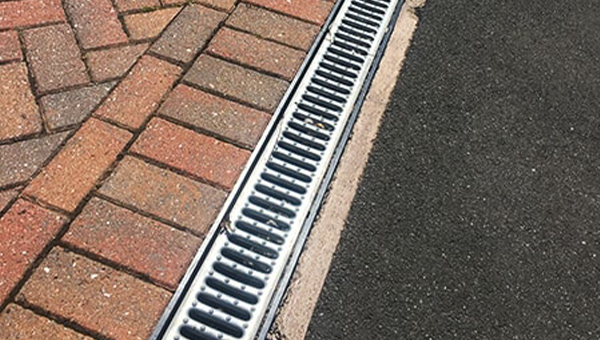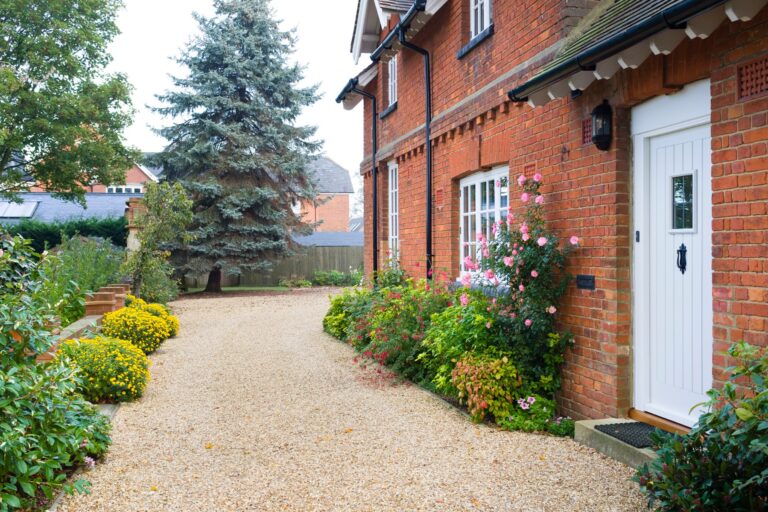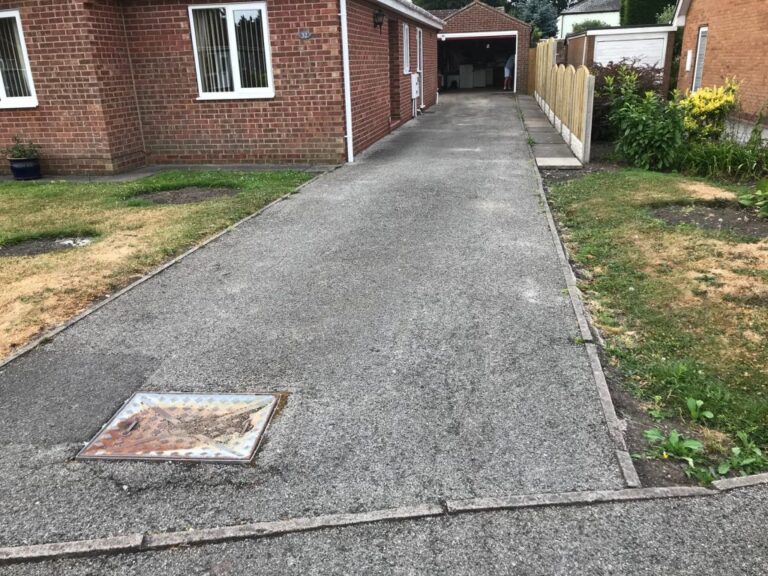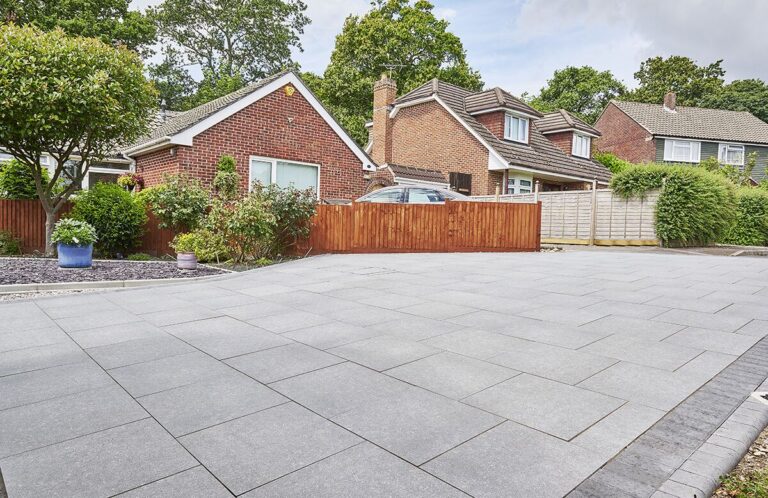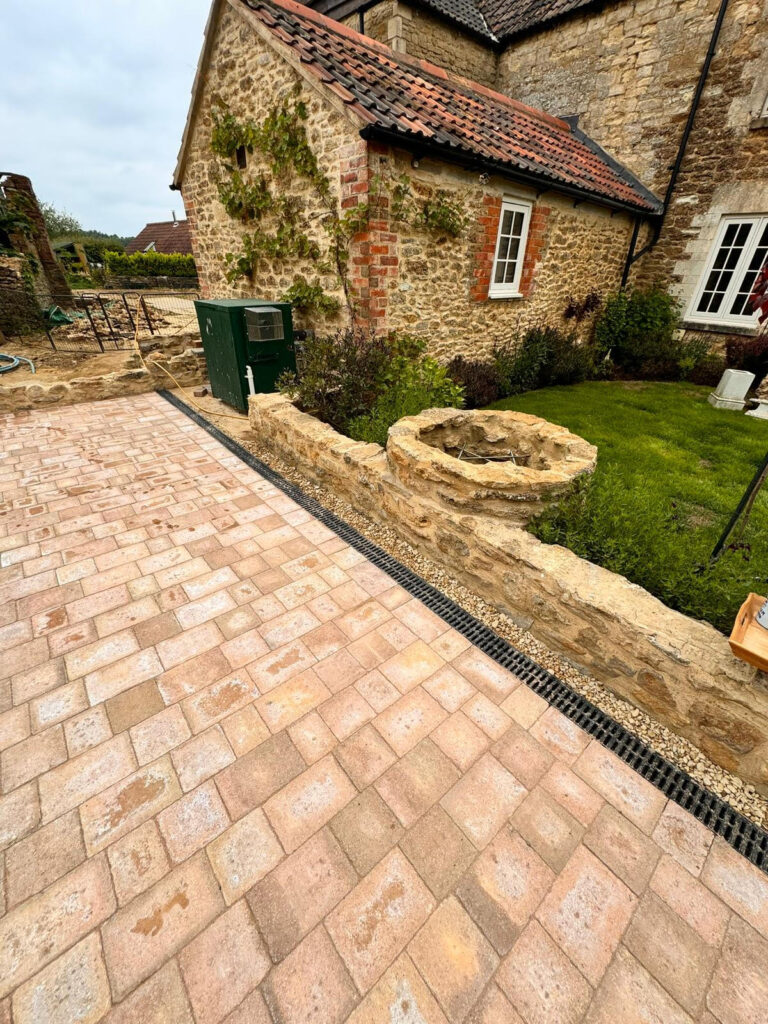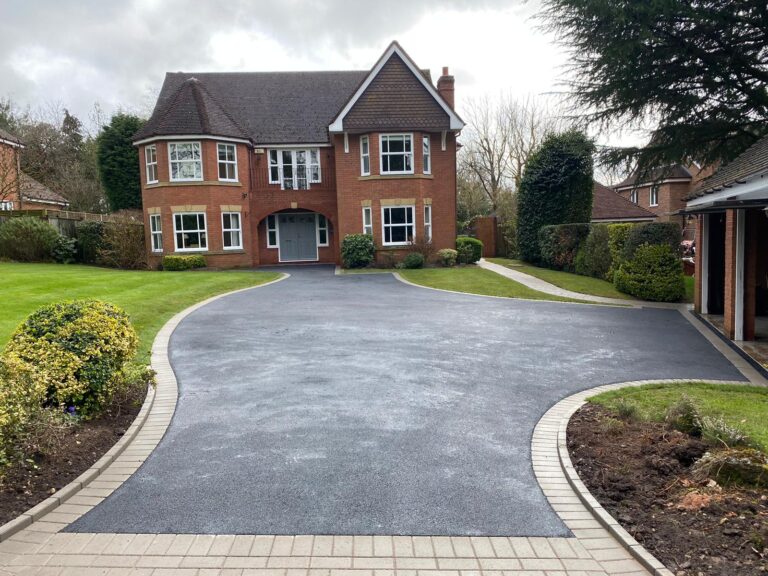A driveway is a crucial part of any home’s exterior, providing a safe and durable space to park vehicles. However, one element that is often overlooked during the planning and installation process is proper drainage. The importance of drainage for a driveway cannot be overstated. Without effective drainage, your driveway can suffer from flooding, structural damage, and increased maintenance costs. In this article, we’ll discuss why proper drainage is essential for your driveway and how it can help prevent long-term problems.
1. Preventing Water Damage and Flooding
The primary role of drainage is to manage water runoff effectively. Without an adequate drainage system, water can accumulate on your driveway, causing puddles and even flooding. Over time, standing water can erode the surface, weakening the structure and leading to cracks, potholes, and surface degradation. These issues can not only affect the appearance of your driveway but also create potential hazards for vehicles and pedestrians.
In areas with heavy rainfall, improper drainage can be particularly problematic. If water is not diverted away from the surface, it can flow into your garage, garden, or even your home, causing damage to your property. This can be a costly and disruptive problem that is best avoided with a well-designed drainage solution.
2. Protecting the Driveway Surface
Different driveway materials, such as tarmac, block paving, or resin, have varying degrees of water resistance, but all can suffer damage from water if the drainage system is inadequate. For example, tarmac is a porous material, which means it can absorb water. However, if water doesn’t drain properly, it can lead to cracks and surface deterioration as the water expands and contracts with changes in temperature.
Block paving, while durable and versatile, also requires a proper drainage system to prevent water from seeping between the joints. If water accumulates between the blocks, it can cause the sand or cement that holds the paving stones in place to wash away, leading to unstable and uneven surfaces.
Even resin-bound driveways, which are known for their permeability, require careful planning for drainage to ensure water is absorbed and doesn’t accumulate on the surface. Without proper drainage, the resin surface may become damaged, and water may erode the underlying base.
3. Preventing Erosion and Subsidence
Without proper drainage, water can erode the soil underneath your driveway, leading to subsidence. This is when the ground beneath the surface sinks or shifts, causing uneven surfaces and potential damage to the structure of your driveway. This is particularly common with gravel driveways, as water can wash away the gravel and create depressions or ruts.
Erosion can also affect other surfaces, such as tarmac or block paving, by weakening the base and causing instability. Over time, this can result in costly repairs and may even require a full resurfacing of the driveway.
To avoid these issues, it’s important to install a drainage system that directs water away from the driveway and prevents soil erosion. This can be done through the use of channels, soakaways, or a slight gradient that encourages water to flow off the surface and into designated areas.
4. Extending the Life of Your Driveway
Proper drainage is essential for extending the lifespan of your driveway. When water is allowed to pool or seep into the structure, it accelerates the degradation of the materials used, which can lead to cracks, discolouration, and wear and tear. If left unchecked, this can result in costly repairs or the need for a complete driveway replacement.
By ensuring that water is efficiently diverted away from the driveway, you protect the integrity of the surface and avoid damage caused by prolonged exposure to moisture. As a result, your driveway will last longer and require fewer repairs, saving you both time and money in the long run.
5. Complying with Local Regulations
In the UK, there are regulations governing surface water drainage, particularly in urban areas. Local councils may require homeowners to ensure that their driveway allows water to drain effectively and does not cause surface water runoff onto public roads. This is part of the UK’s commitment to managing rainwater and reducing the risk of flooding.
If your driveway doesn’t comply with these regulations, you could face penalties or be asked to install a proper drainage system. For example, if you’re planning a new driveway, you may need to incorporate permeable materials or install additional drainage solutions, such as a soakaway or French drain.
6. How to Improve Drainage on Your Driveway
If you’re experiencing drainage issues with your current driveway, there are several ways to improve it:
- Install Drainage Channels: These can be placed along the edges of your driveway to collect water and redirect it to a designated drainage area.
- Soakaways: A soakaway is a pit filled with gravel or other porous materials that allows water to slowly seep into the ground. This can be an effective solution for managing water runoff from your driveway.
- Sloped Surface: Ensure that your driveway has a slight slope that encourages water to flow off the surface and away from your property.
- Permeable Materials: If you’re installing a new driveway, consider using permeable materials such as resin-bound gravel or block paving, which allow water to pass through the surface and reduce runoff.
Proper drainage is essential for maintaining the structural integrity, safety, and appearance of your driveway. Without it, you risk flooding, surface damage, erosion, and costly repairs.
Whether you’re installing a new driveway or addressing existing issues, it’s important to consider how water will flow and ensure that your driveway is equipped with the right drainage solutions.
By investing in proper drainage, you’ll not only extend the life of your driveway but also protect your home and garden from potential water damage.

